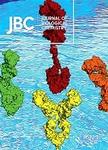版权所有:内蒙古大学图书馆 技术提供:维普资讯• 智图
内蒙古自治区呼和浩特市赛罕区大学西街235号 邮编: 010021

作者机构:Univ Maryland Sch Med Dept Biochem & Mol Biol Baltimore MD 21201 USA
出 版 物:《JOURNAL OF BIOLOGICAL CHEMISTRY》 (生物化学杂志)
年 卷 期:2000年第275卷第37期
页 面:28562-28568页
核心收录:
学科分类:0710[理学-生物学] 071010[理学-生物化学与分子生物学] 081704[工学-应用化学] 07[理学] 08[工学] 0817[工学-化学工程与技术]
基 金:NHLBI NIH HHS [HL55426] Funding Source: Medline
主 题:钙/代谢 钙通道/生理学 仓鼠亚科 甘油二酯类/药理学 亚胺类/药理学 肌醇1 4 5-三磷酸受体 受体 胞质和核/生理学 TRPC阳离子通道 三唑类/药理学 动物 男(雄)性
摘 要:The mechanism for coupling between Ca2+ stores and store-operated channels (SOCs) is an important but unresolved question. SOC-mediated Ca2+ entry is complex and may reflect more than one type of channel and coupling mechanism. To assess such possible divergence the function and coupling of SOCs was compared with two other distinct yet related Ca2+ entry mechanisms. SOC coupling in DDT1MF-2 smooth muscle cells was prevented by the permeant inositol 1,4,5-trisphosphate (InsP(3)) receptor blockers, 2-aminoethoxydiphenyl borate (2-APB) and xestospongin C. In contrast, Ca2+ entry induced by S-nitrosylation and potentiated by store depletion (Ma, H-T., Favre, C. J., Patterson, R. L., Stone, M. R., and Gill, D. L. (1999) J. Biol Chem. 274, 35318-35324) was unaffected by 2-APB, suggesting that this entry mechanism is independent of InsP(3) receptors. The cycloalkyl lactamimide, MDL-12,330A (MDL), prevented SOC activation (IC50 10 mu M) and similarly completely blocked S-nitrosylation-mediated Ca2+ entry. Ca2+ entry mediated by the TRP3 channel stably expressed in HEK293 cells was activated by phospholipase C-coupled receptors but independent of Ca2+ store depletion (Ma, B-T., Patterson, R. L., van Rossum, D. B., Birnbaumer, L., Mikoshiba, K., and Gill, D. L. (2000) Science 287, 1647-1651). Receptor-induced TRP3 activation was 2-APB-sensitive and fully blocked by MDL. Direct stimulation of TRP3 channels by the permeant diacylglycerol derivative, 1-oleoyl-2-acetyl-sn-glycerol, was not blocked by 2-APB, but was again prevented by MDL. The results indicate that although the activation and coupling processes for each of the three entry mechanisms are distinct, sensitivity to MDL is a feature shared by all three mechanisms, suggesting there may be a common structural feature in the channels themselves or an associated regulatory component.